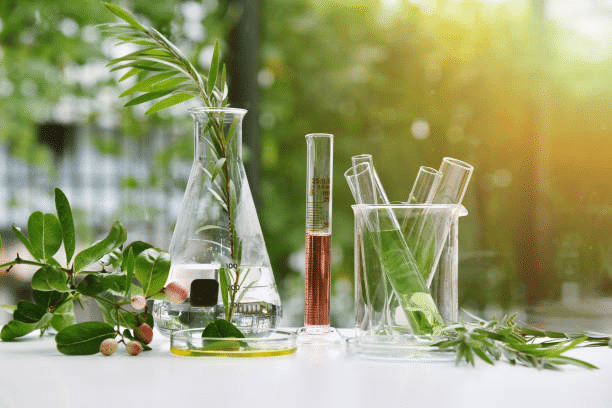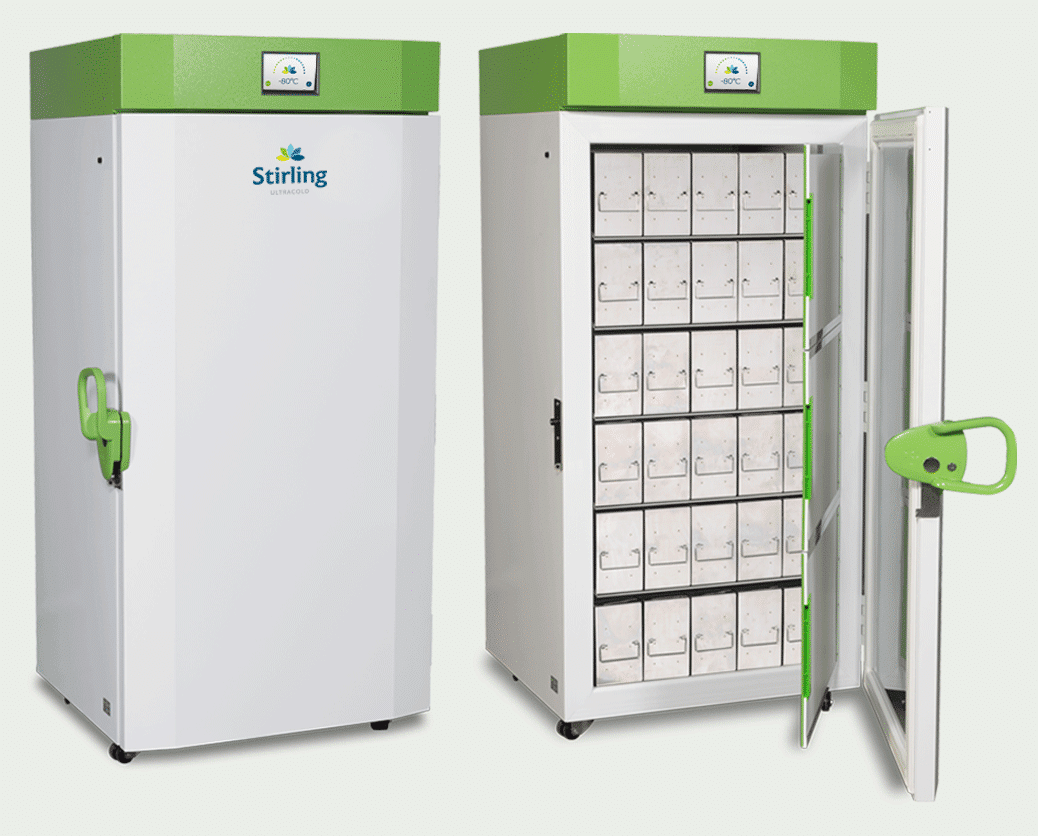The average laboratory design uses up to ten times more energy consumption than the average office building. However, the rising energy costs of consumption and increasing concerns for environmental impacts are driving increased awareness of sustainable lab choices. The good news: Many researchers have successfully developed ways to renovate their laboratory into an environmentally sustainable lab design.
The approach to sustainability research and green energy usage is the same for a lab as it is anywhere else: Reduce energy consumption and expenditure.
Even a slight energy reduction in a laboratory can have a more significant impact on environmental sustainability than the reduction of a small green energy consumer.
More and more research shows that lab owners who implement key sustainable features in their active facilities can improve their bottom line while also having a positive environmental impact.
Below are some critical considerations for sustainable laboratory design.

Why Create a Sustainable Lab Design
Recent examples have shown that building a sustainable laboratory saves energy, resulting in cost savings in the bottom line, now and long-term. As a result, more laboratories have begun to implement sustainable energy methods when undergoing renovations or new builds.
However, the benefits go beyond simply reducing energy costs. Sustainable lab designs change how labs are constructed, designed and used for better green energy consumption.
Here are just a few of the key benefits of a effective sustainable lab design and green energy operation:
- By definition, a sustainable lab should consume less energy than traditional, non-sustainable labs.
- A proper plan will lead to better use of physical space, less energy consumption, lower air quality change rate, and air cooling systems allow more efficient laboratory ventilation. That means lower air change rates, requiring fewer air handling units and exhaust fans — leading to lower operation costs.
- A proper design considers long-term needs and offers more operational flexibility without needing construction for one-off changes. That means faster upgrades and saving money on green energy in the long term.
- Sustainable labs can also have low operation costs by incorporating energy efficient lab equipment and implementing space consolidation never considered. When laboratory space and systems are consolidated, indoor air quality is increased, lowering requirements for air control redundancy.
- By providing access to sustainable laboratory practices and decreasing energy use, laboratory managers can empower staff and improve staff retention throughout the entire enterprise using the facility.
10 Ways to Create a Sustainable Lab Design
 Holistic Approach to Sustainable Lab Design
Holistic Approach to Sustainable Lab Design
Sustainable labs are about more than conserving energy or water and more than just the physical design of the lab. Sustainability processes drive successful and sustainable efforts within the laboratory. Architecture, building systems, and internal functions all come into play.
A holistic approach requires collaboration among engineers, researchers, building managers, architects, and scientists from the beginning. Laboratory engineers are committed to seeing a project from the sustainable lab design phase, ensuring that building elements that utilize sustainable qualities are realized to maximize potential.
Working together can create a laboratory that achieves both the energy efficiency and sustainability goals, while also protecting the goals and priorities of the company and its staff.
Employ EPA Criteria for Sustainable Design
The United States EPA sustainable laboratory national standards are designed to improve the environmental performance of a new or existing laboratory. Following national sustainability standards helps reduce emissions, pursue new and efficient technology, and streamline water and energy usage in new sustainable lab design systems.
Starting with a focus on national sustainability standards helps recover and incorporate renewable resources over an entire lifetime of use.
It also addresses training programs, classes, and consistent meetings to stay on top of cutting-edge technology that creates new design and energy conservation initiatives.
Minimize Loads to Create Sustainable Design in Labs
Another practice of sustainable lab design methods for a sustainable laboratory is to group areas of a facility that use a similar amount of energy. Minimizing loads promotes the proper use of space so that a laboratory can be separated from areas that do not share the exact energy requirements.
Reducing loads is also excellent for reducing outside air used for ventilation. Since air supplied to labs is exposed to contaminants within the labs, air cannot be returned to a central air handling system like your typical HVAC setup. That means the volume of ventilated air in labs is higher than those of other facilities.
The right HVAC company will understand the different classifications of air in each lab and how to utilize outside air efficiently while also protecting the air quality. Labs rely on return air from through an HVAC system then get ducted into the lab’s air. The air supply for labs is exhausted, having been used twice in labs.
Accurate internal loading is crucial to reduce energy use. Laboratories must be designed to work with users’ energy-efficient lab equipment that uses less power. Another way to reduce load is to create a design process that mitigates climate change. Minimize loads to maximize sustainability and create a positive impact on climate change.
Passive Energy and Lighting Systems in Sustainable Design
Take advantage of passive energy systems. Natural light is an excellent example of taking advantage of passive laboratory systems. Engineers can identify natural light, daylight harvesting systems, and tools that allow workers to benefit from natural light. Passive solar heating for winter and natural ventilation from breezeways also take advantage of passive systems.
Design teams should prepare researchers to utilize passive systems in laboratories. Doing so can lead to the proper use of passive components built into installation specifications.
HVAC Systems and Other System Optimization
Laboratories’ HVAC systems and heat-generating equipment is about far more than temperature control. It’s a critical part of energy consumption, efficient heating and the protection of air quality. Fume hood and cold chain equipment consume the most energy in laboratories. Higher-efficiency HVAC systems can also help reduce energy usage.
Tip: Evaluate the number of fume hoods that are necessary for laboratory use. Unnecessary fume hoods can have a negative impact on sustainability, as fume hood use is not monitored well in many cases.. Consolidating the number of fume hoods in a laboratory, combined with keeping them closed when not in use is beneficial to creating a sustainable lab environment.
In addition to reducing the number of fume hoods in use, other approaches can be used to reduce energy consumption such as:
- Variable Air Volume ventilation systems
- Occupied and unoccupied operation
- Reduced sash openings
- Efficient HVAC systems
- Use of low-flow hoods
Other HVAC systems lower temperatures with circulated water instead of air and provide even more energy savings.
Renewable Energy Technology for Sustainable Design
Renewable energy technology — such as wind turbines, panel systems, biofuel, and biomass — has grown increasingly popular due to globally recognizable interest in sustainability. Wind turbines can convert solar and wind energy into electricity. Biomass systems create renewable agriculture, reducing dependency on fossil fuels.
Renewable energy systems can flourish in facilities designed using a holistic approach. These renewable systems should be a final step in creating a sustainable laboratory. The lab’s utility provider may also provide incentives that offset the high cost of installing renewable systems.
Research and Perform a Cost Analysis
After building preliminary concepts, engineers can use building simulation technology to perform a cost analysis of the laboratory life-cycle. Such analysis processes include computational fluid dynamics, daylight harvesting simulation, thermal dynamics, and building information modeling.
Design tools can help engineers and architects develop strengths in the laboratory’s systems, giving them the right equipment for day-to-day needs while planning for future growth. The life-cost analysis also helps laboratory facilitators make the right decisions in finance.
Establish Design Flexibility
Infrastructure flexibility is vital in laboratory design. The rate at which technology advances requires a laboratory lifespan to implement significant upgrades after ten years of use. Not implementing flexibility prevents researchers from using new advancements in technology while leaving them confined to the technology infrastructure they are currently limited to using.
Laboratory designers can create a space that ensures a sustainable lab is built to last from the very beginning. New equipment can be added at faster rates compared to a complete renovation.
Comprehensive Commission Design
Comprehensive commissioning provides documented confirmation that a laboratory’s systems function as designed. This is the best method for quality assurance that a facility can provide. Commissioning can be applied to existing facilities as well as new facilities. Third-party commissioning evaluates a sustainable lab to address the current system’s performance requirements and develops a new set of criteria for the facility.
Rethinking Renovation and Sustainable Design
There are two primary ways to renovate a laboratory. The first is to upgrade existing infrastructures for more energy-efficient equipment. The second way to renovate is to reuse existing buildings with new and sustainable systems. This type of reuse allows for improvements, including new insulation.
The second type of renovation is more environmentally friendly than creating an entirely new facility but requires excellent planning from the start. The challenge is to use the existing facility in new, sustainable ways.
Stirling Ultracold’s Energy Efficient Freezers

An optimized laboratory design must also factor in its cold storage equipment. Stirling Ultracold is a pioneer in energy-efficient ultra-low temperature (ULT) freezers, used to realize your laboratory’s sustainability initiative with no compromise in storage, design, or performance.
When considering the environmental impact of energy-efficient low-temperature freezers, our systems provide sustainable solutions with zero compromises in performance and reliability. Our systems:
- Use less than one-third the electrical energy of standard, compressor-based ULT freezer technology.
- Reject less than one-third the heat of standard, compressor-based models, which reduces building HVAC energy consumption
- Phase out HFC refrigerants with high Global Warming Potential by using Stirling ULT models that use 100% natural hydrocarbon refrigerant.
- Use environmentally-friendly insulation agents, utilizing less raw materials than ever before.
CREATE A MORE SUSTAINABLE LAB WITH STIRLING ULTRACOLD








